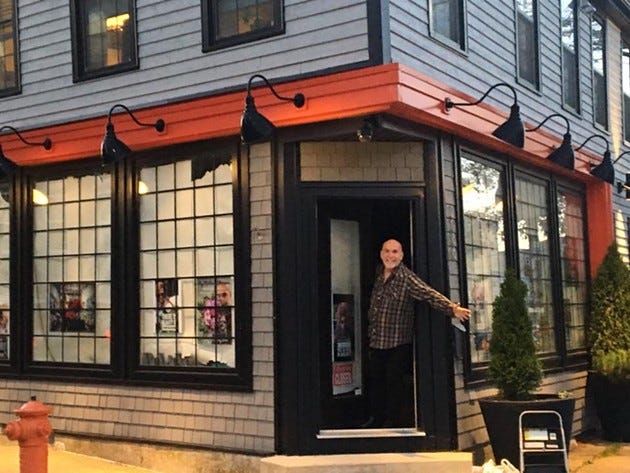If your social media feed is anything like mine, the constant barrage of #EuroSummer continues. London, Paris, Barcelona, Santorini and beyond.
Many who come back to Canada might wonder, why can’t our cities be more like Europe? The streets are walkable, there is a café around the corner, and public transit is generally much better. The lifestyle difference is so stark that some tourists lose weight on vacation, often speculating about processed foods and chemicals in food, while others will simply point to the increased walking that comes naturally to a European city compared to North American cities.
So why can’t our cities be more like Europe? In many ways, its illegal.
Take building height restrictions, for example. In Halifax, even within the ‘Regional Centre’, which is the peninsula and Dartmouth within the Circumferential highway, most of the land area, and especially the residential land area, has a maximum height of 3 storys (shown in red). Notice the green areas: downtown Dartmouth, along Quinpool and along Robie in the North End. They represent small pockets of allowed density (up to 25 storys).
To show the same data differently, the chart below shows height restrictions on the Y-axis, and the X-axis represents the share of ‘regional centre’ area.
As you can see, nearly 50% of our most urban areas cannot build a four story building. There is a tree on my block that is taller than the legal maximum height of the majority of our urban core.
Only about 20% of the land area is able to reach the 7-story heights that Paris has across nearly the city. I’m showing height restrictions because they are a simple illustration of the legal restrictions on homebuilding, but the problem spreads further. For one, most ‘established residential’ areas are not allowed to have dwellings ‘touch’ each other, with mandatory side yards. This includes areas that currently have buildings touching each other. That means you could not build the density that currently exists1.

We simply don’t allow Canadians to use the land they own densely, mandating much of it to be yards or empty space.
Nor do we allow cafés to share land with residential units. We strictly separately commercial and residential uses. Halifax, as an old city, still has the fingerprints of times before such strict zoning (and before the automobile made it possible live three kilometers away from a grocery store)
My neighborhood in the North End is a good example. The homes are often over a hundred years old. They share walls. The homes go right up to the curb. There were commercial stores next to residences, and almost always with an apartment above (a neat tip to spot the former stores - they will have the door on the “corner” of the building, hence a corner store).
Today, I can only think of one store still in my little area - the fantastic My Mother’s Bloomers' flower shop. If you haven’t been, you should!
Paris on the Peninsula
Using many small rules and some very big ones, city rules mandate low-density housing, even in our urban core. The Halifax Peninsula had a population of 72,000 in the 2021 census, with a population density of 3,800 people per square kilometer. Paris, by comparison, averages 20,000 people per square kilometer, 5x as dense as the Halifax peninsula. If we could achieve Parisian density we could add another 300,000 residents in our most walkable, transit enabled, and job-rich areas (that’s about 15 years worth of HRM’s record breaking 4.5% growth in 2022).
I’m not saying European cities are perfect, or that we should limit construction to 7-storys (we should go taller). My point is that our failure to build enough housing is a consequence of the vast areas where we effectively ban growth, not the pockets where we hyper-focus it.
In Halifax’s case, they haven’t decided what they want to do about proposed heritage areas, so they’ve downzoned it to ER-1, the most restrictive zone type, to protect it. To me, it seems an admission of the power of zoning…








Deny,
Power Zone,
Who controls the thinking of a 100 years ago today? Yes it made sense in horse drawn fire trucks of 1923.
Paris has no butter on tables just olive oil.......I lost 10 lbs walking over there...
South End trees have more rights than you do......